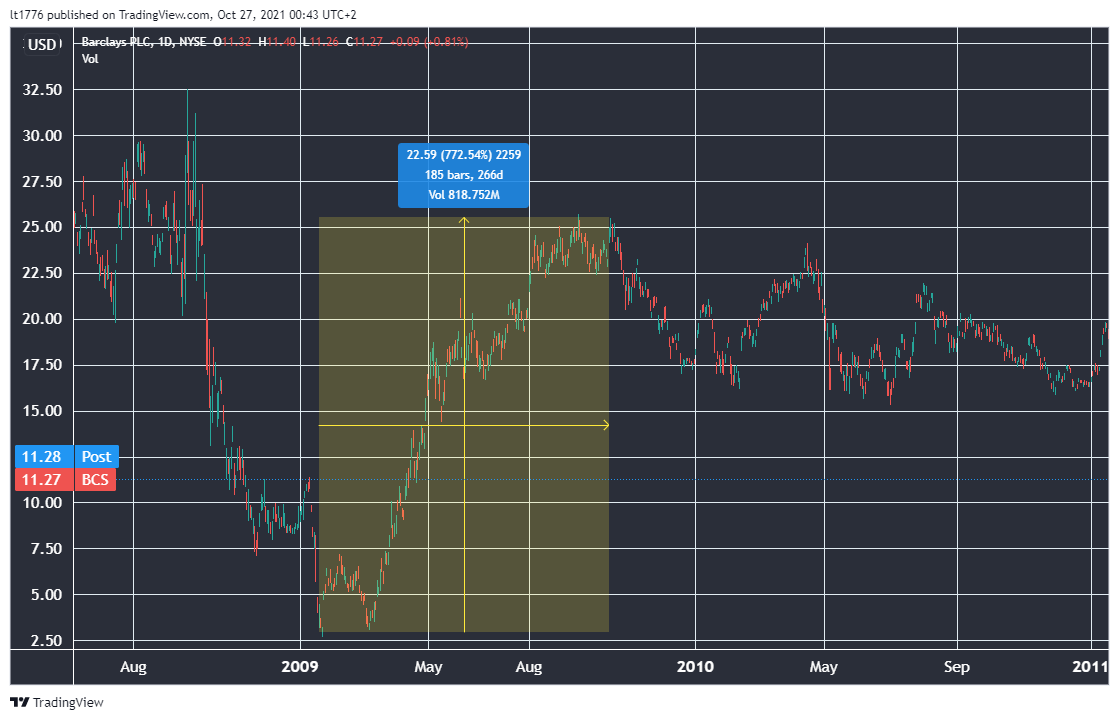In today’s Money Morning…misplaced enthusiasm before the apocalypse, or is this bull run the real deal?…13 years ago, the bottom was in and I played it safe…this is financial class warfare…and more…
It’s a strange one (or is it?) — with the major outlets not huddling around one particular story, markets are moving higher.
There’s the looming energy crunch, Evergrande in the background, climate talks — no real rhyme or reason to things right now.
In the absence of something awful to dwell on, the bull run continues.
As per Reuters:
‘Some stellar quarterly reports have helped drive the Dow and the S&P 500 to record highs, lifting investor sentiment in October after concerns around inflation, the Fed’s tapering and property group China Evergrande’s crisis rattled markets last month. The Nasdaq is trading about 0.5% below its Sept. 7 record high.
‘At 11:46 a.m. ET, the Dow Jones Industrial Average (.DJI) was up 125.39 points, or 0.35%, at 35,866.54 to hit a record high.
‘The S&P 500 (.SPX) was up 24.64 points, or 0.54%, at 4,591.12, and the Nasdaq Composite (.IXIC) was up 94.73 points, or 0.62%, at 15,321.44.’
Misplaced enthusiasm before the apocalypse, or is this bull run the real deal?
Of course, we all know it’s fuelled entirely by printed money and debt.
That’s not going to change until a global crypto-pivot plays out.
But for my money, bear narratives are often just pawns in a wider game of network effects and social psychology that benefit the big end of town.
Call it the ‘bear soothsayer as a tool to shake out retail investors for the benefit of big funds’ thesis.
Maybe this is cynicism, but I’d call it realism.
Here’s what I mean by that.
13 years ago, the bottom was in and I played it safe
I started watching markets around 13 years ago when the GFC hit.
And one of the main things I learned about markets was that narratives are key.
When the narrative is fractured and all you have are a host of minor concerns — best to be long.
Another thing I learned is that when you are young, more aggressive strategies make more sense.
For instance, near the GFC bottom in January 2009, I had US$1,000 to my name and set up a trading account.
Banks were under stress and a financial implosion was on the cards.
I was eyeing off one of the most stressed banks in the UK — Barclays — for a potential punt.
At the time, it was trading at US$2–4 on the NYSE:
|
|
|
Source: Trading View |
My finger hovered over the buy button as I weighed up all the negative stories and all I had heard from the bear soothsayers.
After umming and ahhing, I opted for a Singaporean semiconductor stock with a healthy price-to-book ratio instead.
Had I had the cojones to take the plunge, I would’ve clocked 700% in a handful of months.
The bailouts came in and Barclays went flying.
My reasoning at the time was that Barclays were still sponsoring the English Premier League.
Things couldn’t be so bad for the bank that austerity measures would be brought in and sponsorships would be cut?
It was a childish rationalisation, but I regret not pulling the trigger to this day.
I could recoup my losses on Barclays with a bit of work. It would’ve helped pay for my education as well.
The main point, though, is that I shouldn’t have bought the narrative that the banks would collapse.
Which brings me to the following point.
How to Limit Your Risks While Trading Volatile Stocks. Learn more.
This is financial class warfare
I’m not saying bears don’t have legitimate concerns or that they are knowing pawns in financial class warfare.
Debt is a problem, central banks put savings in the bin, the whole thing stinks to high heaven.
The world is a mess, yes.
But ideology should not guide your investment decisions.
I think big funds help amplify bear narratives when it suits them — and they play on ideology to shake out naïve retail investors while they put on more long index bets.
It happens at the macro level and at the micro level with individual stocks.
When a big fund enters a stock, you hear all about how great it is in the Australian Financial Review, they exit and then the knives come out.
All for a cheaper entry for big funds that missed the boat.
Bottom line: funds want to shake you out of the market.
There is no cabal, but there are coordinated media efforts in the market and individual stocks designed to create convenient panic.
Money Morning’s ethos is to cut through that and help you see through the hyperbole and amplified narratives.
Thanks for being a subscriber.
Regards,
 |
Lachlann Tierney,
For Money Morning
PS: Our publication Money Morning is a fantastic place to start on your investment journey. We talk about the big trends driving the most innovative stocks on the ASX. Learn all about it here


